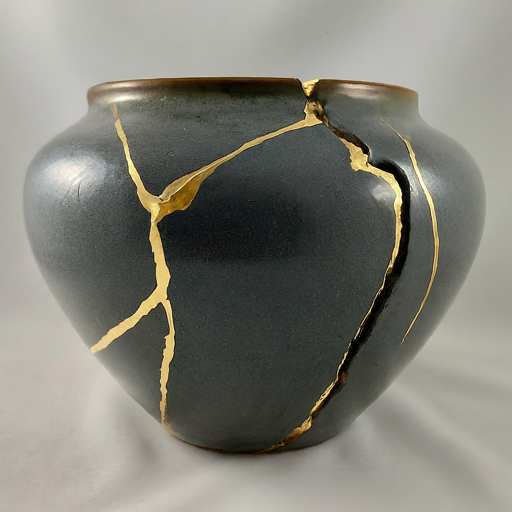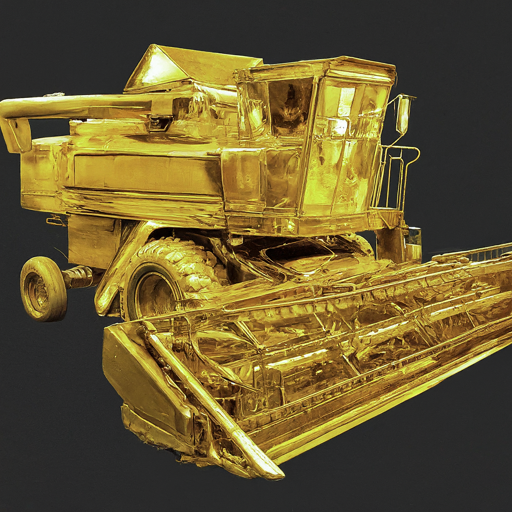
This is kintsugi.
A broken piece of pottery is repaired by welding the pieces back together. With gold. The artistic form of repair is brought to you by the island nation of Japan. Just Humpy Dumpty had taken his great fall there. That boy would be blinged-out now. Get a little kintsugi in ya, all the fellas with the fancy grilles gonna feel underdressed.
Clay pottery is not a scarce commodity in Japan. To go from clay pot to broken clay pot to kintsugi is like going from a trailer house to living in the street and then straight into a mansion. The gold used to put it back together – plus the time and skill – has so much more value than what is being repaired.
This is true art, not a banana duck-taped to a wall. It carries a beautiful message, both profound and useful.
Kintsugi says embrace your flaws. Celebrate your imperfections. Honor your struggle. You cannot realize your true potential – your hidden beauty – until you go through tough times.
And what was broken becomes stronger. That’s the gold!
As with any reverence to a storied culture and their wisdom, I’d like to dumb this down into something I saw on the farm.
Today’s seemingly-cringeworthy-but-on-second-thought-brilliant comparison is brought to you by a majestic mustache, an L2 Gleaner combine, and a brazing rod.
In high school I went to work for a neighboring farm run by a father and son, Roger and Spencer.
They were still running old L2 Gleaner combines back then, nearly thirty years old. These wheat whips were tired.
I mean – they weren’t junk. But they were old. The sheet metal had holes in it from the wheat straw. Yeah – holes in metal caused by straw. That takes a long time, a lot of hours and acres.
The farm was ready to upgrade. Not only that, it seemed everyone else already had. These were eight thousand dollar machines, maybe. Any given day during harvest we’d be cutting in a field next to someone with a new machine that cost twenty-five times as much.
But dropping a quarter million dollars for an air-ride seat and an ice-cold air conditioner seemed unwise. It was a very difficult time to be farming – two dollar corn, fuel had just doubled. Pennies were pinched like booties in front of politicians.
So each year Roger disappeared for three days into the ass of those combines to patch the holes. Armed with nothing but a blow torch, brazing rod, and Tom Selleck moustache.
I remember not understanding at first. Every year, the same holes were patched, plus new. Every year, the work was re-done. It seemed utterly futile.
Then I looked for myself and it clicked.
You see, the same process which wore holes in the sheet metal also shined the brazed patches to a brilliant sheen. After a few hours in the field, you could poke your head in the rear and see…
Kintsugi.
I didn’t know to call it that at the time, but it surely was. It looked like art. Blotches, lines and patterns, seemingly incongruent but stunning in a strange way.
I got it then. I understood all the hours and patience. I got why you’d do something knowing it would be re-done. It was beautiful and it worked.
It’s not hard to imagine yourself as a piece of pottery, or Humpty Dumpty, or an old Gleaner.
Something will break you, and not just once. Sometimes you’ll break yourself, shattering what was before. And the more you break, the more gold fills you back. The stronger you become until there’s nothing left to break.
You’re all gold now. Maybe you can be bent, dented, scuffed or scratched, but you’ll never be broken again. At a certain point you just realize – being broken is a lie. Nothing can hurt you, it can only make you stronger.
You’re gold, baby!

Leave a Reply
You must be logged in to post a comment.